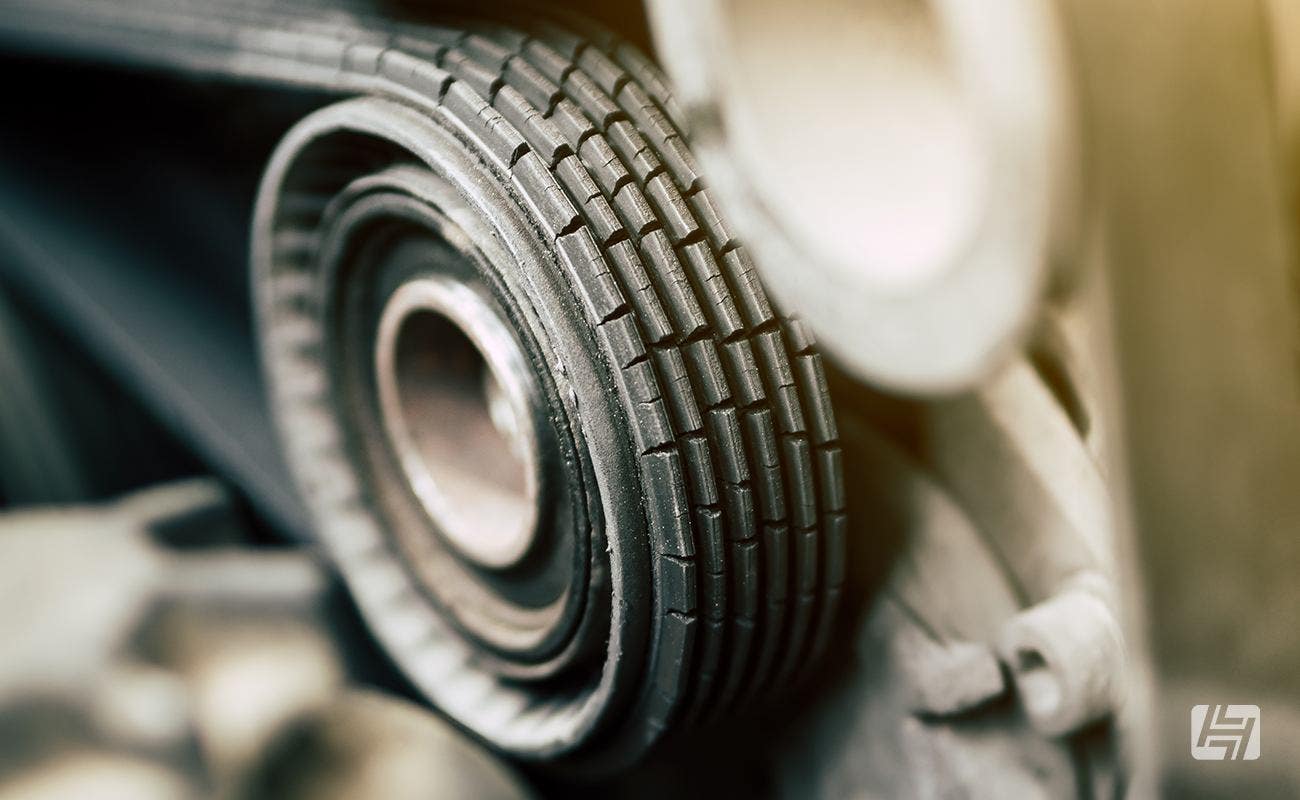What does a Timing Belt do?
Timing belts play a crucial role in the smooth running of an internal combustion engine, ensuring the perfect synchronization between the pistons and the valves. In this blog article, we will delve into the details of what a timing belt is, why changing a cambelt requires such precision and what could happen if you don't replace the timing belt within the correct service interval.
What is a Timing Belt?
The timing belt, also known as a cambelt or a synchronous belt, is a toothed belt made of durable rubber, reinforced with fabric or metal cords. It is designed to connect the crankshaft to the camshaft in an internal combustion engine. The timing belt is fitted to external pulley wheels fitted on the end of both the crankshaft and camshaft. The function of a timing belt is to coordinate the crankshaft and the subsequent movement of the pistons and the opening and closing of the engine's valves within the cylinder head, controlled by the camshaft.


Is a Timing Chain different to a Timing Belt?
Whilst they both do the same job, ensuring that the top and the bottom half of the engine are in-sync, the big difference between timing chains and timing belts is the material they are made from, which then determines how much maintenance they require.
Timing chains, as the name suggests are made from metal links, much like a bicycle chain. Whilst they are chosen for their more durable construction, they can still break or stretch over time, but their service interval is typically much longer than that of a rubber cam belt.
Some vehicles, such as the Golf GTI 16v, which has two camshafts use a combination of both a timing belt and a timing chain. The crankshaft and one camshaft are joined by a timing belt to keep the pistons and exhaust valves in check, and then the two overhead camshafts are linked together by a metal timing chain.


What happens if the Timing Belt snaps?
Checking the timing belt when you purchase the vehicle should be a priority, especially if there is no record of it being changed. And if it looks like this, get it trailered to your mechanic of choice straight away. A snapped cambelt can have severe consequences for your engine and wallet. How severe will all depend on the type of engine design your vehicle has, and how quickly you turn everything off!
- Interference Engines: In an interference engine, the pistons and valves share the same space within the combustion chamber. If the timing belt fails and the synchronization between the crankshaft and camshaft is lost, the pistons will collide with the valves. At the moment that a belt snaps, your crankshaft and camshaft will be turning at 1000s of revs per minute, and this momentum will continue, but without any control from the belt. The result from this hard stop, is bent valves, damaged pistons, and no doubt damage to other engine components too. Repairing an interference engine after a timing belt failure can be very costly, and it will often end with the engine being completely replaced with a new or good used unit instead.
- Non-Interference Engines: Non-interference engines are designed with enough clearance between the pistons and valves, so even if the timing belt fails, the damage isn't catastrophic. It will still leave you needing to get the vehicle recovered before you rebuild it, but that's a small price to pay.
We're not saying avoid vehicles fitted with interference engines. Just make sure your belts are in good shape and your service schedule is kept up to date.


Components required for Timing Belt replacement
To ensure optimal engine performance and longevity, all associated components should be inspected or replaced at the point of doing the Timing Belt. Here are the key components to consider.
- Tensioner: The timing belt tensioner prevents excessive slack or too much tightness in the timing belt.
- Idler Pulley: The idler pulley guides the timing belt and helps maintain its proper alignment.
- Water Pump: In some engines, the water pump is driven by the timing belt, and can also serve as a tensioner too. If the water pump is nearing the end of its lifespan, we would recommend replacing it at the same time as the belts to avoid any costly repairs in the future.
- Balance Shaft Belt: Some engines operate a balance shaft to counteract vibrations and harmonics caused by the engine's moving parts. It helps to reduce engine noise, enhance smoothness, and extend engine life. Whilst it is unlikely this shaft will need replacing, it is typical to fit a new balance shaft belt at the same time as the timing belt.


Replacement interval for Timing Belts
The replacement interval for timing belts varies depending on the vehicle manufacturer, engine type, and specific model. As a general guideline, timing belts are recommended to be replaced every 60,000 to 100,000 miles or every 4 to 7 years, whichever comes first. However, it is essential to refer to the manufacturer's recommendations and the vehicle's owner's manual for accurate information regarding your specific make and model.
If a vehicle has been parked up for a long time, it may have only covered half of the specified service interval mileage, but the rubber belt will have started to perish. If you are buying a barn find or a low-mileage project car, do keep this in mind, as the belt should ideally be done BEFORE the vehicle is fired up.


Is it hard to change a timing belt?
The difficulty and skill involved in changing a vehicle timing belt varies quite dramatically. Some older more basic engines only require a few items to be unbolted for you to gain access to the cambelt, and with experience, these types of jobs could be done in an hour.
For the vast majority of cambelt changes, however, it is a more serious business, often involving specialist tools to lock particular parts of the engine in place. But that's not to say you can't do it yourself in the company of a good workshop manual, or a reputable YouTube video, and most of the 'main dealer only' tools can be bought online these days.
Pencil in a weekend when you don't need the vehicle, order all the parts (and a few more in case something breaks) and simply take your time. It is always prudent to turn the engine over a few revolutions by hand before starting it back up, and stop immediately if anything feels stiff! Should you have made an error you'll be able to retrace your steps to put it right, hopefully without causing any damage.


Whether you undertake a timing belt change yourself or pass the job on to your mechanic we do believe a good understanding of how and why engines work is important for helping to diagnose faults, and to make informed decisions regarding your vehicle's maintenance.
Best of luck and happy motoring.
Andy




 Beetle
Beetle
 Type 2 Bay
Type 2 Bay
 Type 2 Split
Type 2 Split
 Type 25
Type 25
 Transporter T4
Transporter T4
 Transporter T5
Transporter T5
 Golf Mk1
Golf Mk1
 Golf Mk2
Golf Mk2


 911
911
 996
996
 997
997
 986 Boxster
986 Boxster
 987 Boxster
987 Boxster
 912
912
 944
944
 924
924


